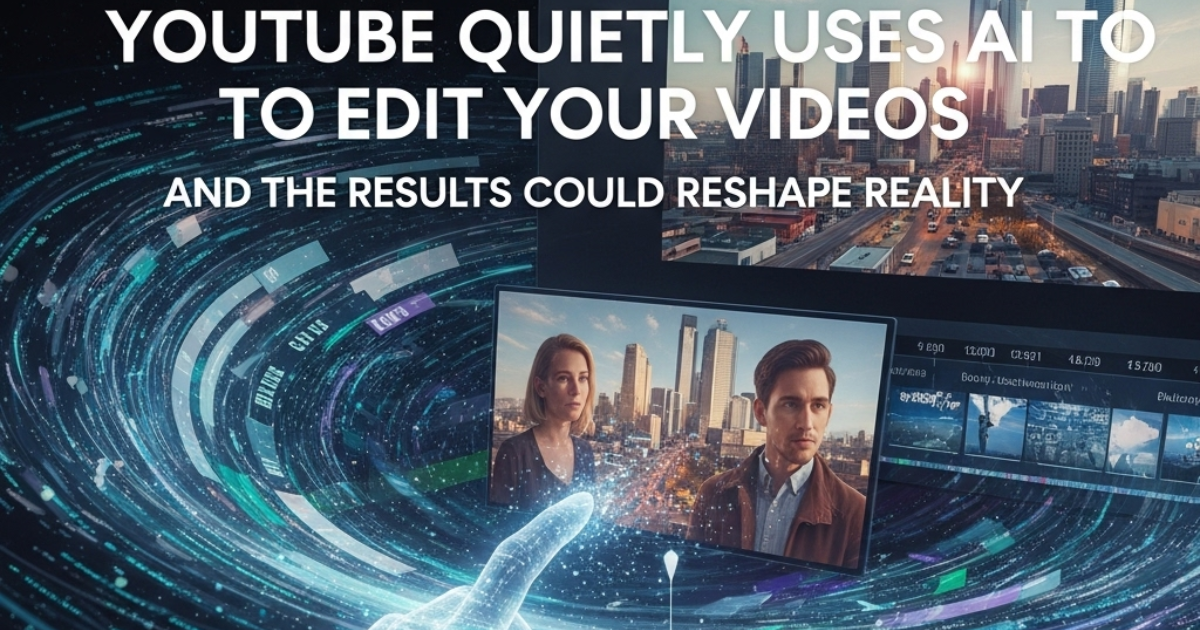YouTube secretly applied AI enhancements to videos without user consent, raising new questions about how artificial intelligence is quietly shaping our connection with reality.
Music YouTuber Rick Beato – with over five million subscribers and nearly 2,000 videos – noticed something was off in a recent upload. ‘Man, my hair looks strange,’ he recalls. ‘And the closer I looked, it almost seemed like I was wearing makeup.’ The changes were so subtle he questioned himself: Am I just imagining things?
#1YouTube Quietly Used AI to Edit Creators’ Videos – Without Permission
YouTube has been secretly enhancing videos with artificial intelligence (AI), leaving many creators unsettled. Popular YouTuber Rick Beato, with over 5 million subscribers, noticed something strange in one of his uploads: sharper skin, odd lighting, and an unnatural look. “I thought I was imagining things,” he said.
He wasn’t. In recent months, YouTube has applied AI-driven tweaks—smoothing skin, sharpening clothes, and even subtly warping features—without informing creators. The edits are small, but creators like Beato and fellow musician Rhett Shull say they add a fake, AI-generated feel.
“If I wanted this kind of over-sharpening, I’d do it myself,” Shull said in a video now surpassing 500,000 views. “It misrepresents me and could erode trust with my audience.”
This quiet experiment reflects a bigger issue: more of our “reality” is pre-processed by AI before we ever see it. What does that mean for our connection with real life?
After months of rumors, YouTube finally confirmed the changes, admitting it has been testing AI enhancements on a limited number of Shorts. The platform says the goal is to improve clarity—similar to how smartphones auto-enhance video—but creators remain skeptical.
As AI continues to reshape the content we consume, one question lingers: Can we still trust what we see online?
#2YouTube’s Secret AI Video Edits Spark Trust Concerns
YouTube has quietly used artificial intelligence (AI) to “enhance” some creators’ videos—without asking permission. The platform admits it has been testing AI-powered sharpening and noise reduction on Shorts, similar to smartphone auto-filters. But critics say it crosses a line.
“On your phone, you can decide which features to turn on,” says Samuel Wooley, disinformation expert at the University of Pittsburgh. “Here, YouTube is manipulating content and distributing it to millions without creators’ consent.”
The company avoided using the term “AI,” instead calling it “machine learning.” But experts argue that distinction is meaningless. Whether it’s generative AI or machine learning, the effect is the same: invisible edits that blur the boundary between real and artificial.
This trend isn’t limited to YouTube. Samsung has been caught enhancing moon photos, while Google Pixel phones now use AI to merge faces into “perfect” group shots that never actually happened. Netflix recently faced backlash for alleged AI remasters of classic ‘80s sitcoms, which left characters distorted and unsettling.
“AI is increasingly a medium that defines our lives,” says Wooley. “People already distrust social media content. What happens when they learn companies are editing reality from the top down, without even telling us?”
Some creators are furious, warning that AI tweaks risk eroding trust with their audiences. Others, like Rick Beato, remain more forgiving: “YouTube changed my life. They’re experimenting, and I get that. But it still feels strange.”
As AI quietly reshapes everything from photos to videos, one question looms larger than ever: Can we trust what we see online?
Reactions
Already reacted for this post.






